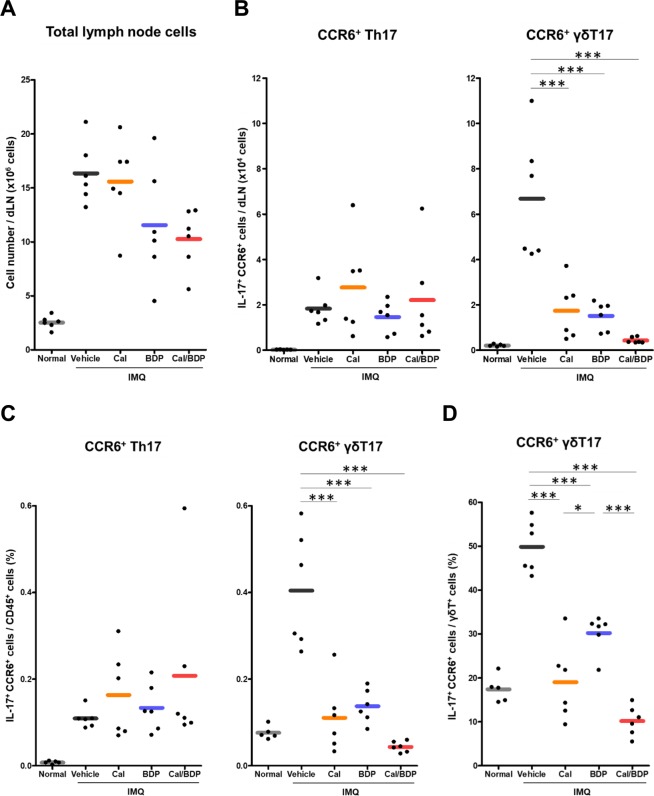Figure 4.
The inhibition of the CCR6+ γδT17 cell expansion in dLNs by Cal/BDP as the therapeutic target. Mice received the topical application of IMQ cream on the ear for 6 consecutive days and were treated with 0.6 nmol Cal, 0.06 nmol BDP, or the combination of 0.6 nmol Cal and 0.06 nmol BDP 1 h before each IMQ application. (A) Reduction in the absolute number of lymph node cells in an individual dLN by BDP and Cal/BDP. Cells from the individual dLN were isolated 1 day after the final IMQ application, and each total lymph node cell number was counted by CDA-1000. (B) The inhibition of the expansion of CCR6+ γδT17, but not CCR6+ Th17, by Cal, BDP, and Cal/BDP in dLNs. Cells from the individual dLN were isolated 1 day after the final IMQ application, and each total lymph node cell number was counted using a CDA-1000. The rates of CCR6+ Th17 and CCR6+ γδT17 in the CD45+ leukocyte population were analyzed by flow cytometry. The numbers of each cell subset were calculated by multiplying the total lymph node cell numbers by the ratio of each cell subset. (C) Reduction in the proportions of CCR6+ γδT17, but not CCR6+ Th17, in the CD45+ leukocyte population by Cal, BDP, and Cal/BDP in dLNs. The rates of CCR6+ Th17 and CCR6+ γδT17 in the CD45+ leukocyte population were analyzed by flow cytometry 1 day after the final IMQ application. (D) Reduction in the proportion of CCR6+ γδT17 in the γδT cell subset by Cal, BDP, and Cal/BDP in dLNs. Rates of CCR6+ γδT17 in the γδT cell subset were analyzed by flow cytometry 1 day after the final IMQ application. Each symbol represents an individual mouse, and the horizontal lines indicate the means of the groups (n = 5–6). *p < 0.05, ***p < 0.001 by Tukey test among the vehicle, Cal, BDP, and Cal/BDP groups.

